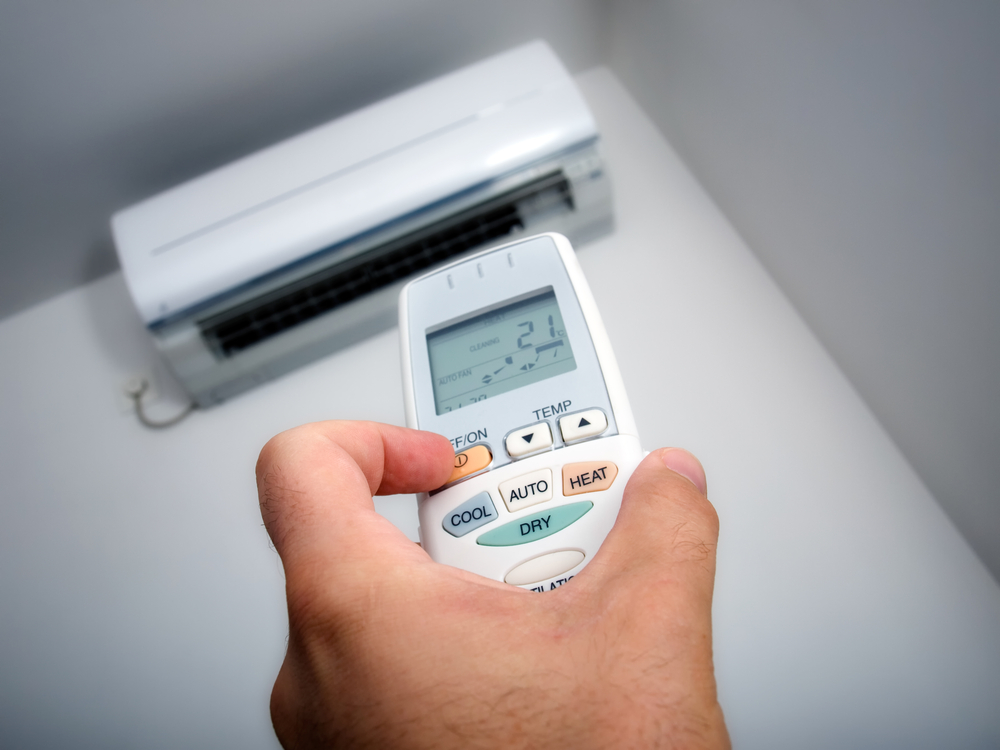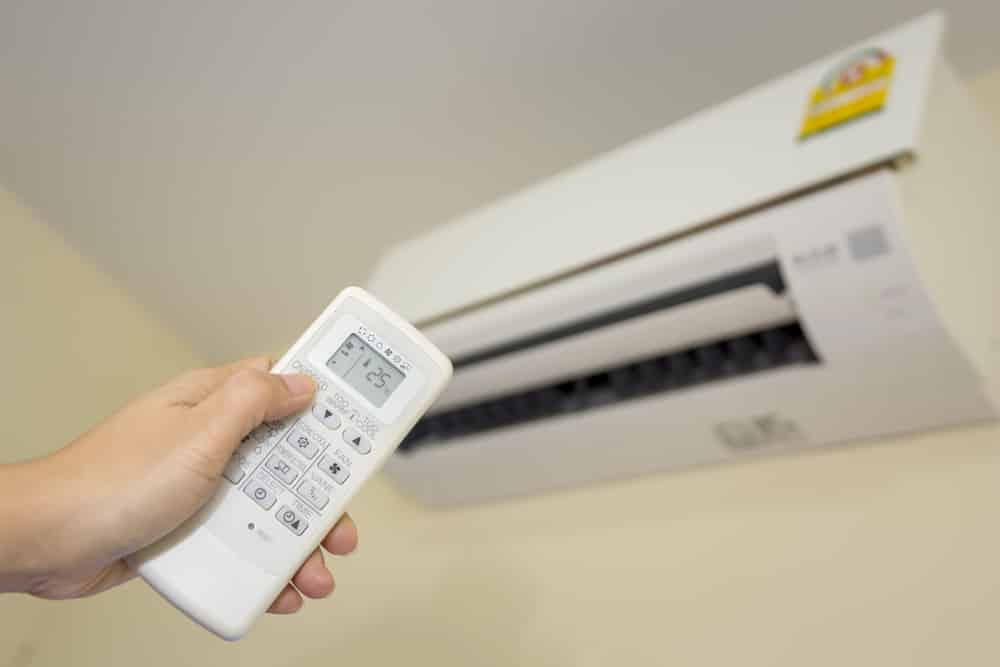What Is A Good Temp For Air Conditioning

Ah, summer. The sun is shining, the birds are singing...and your air conditioner is struggling to keep up. One of the most frustrating problems homeowners face is an air conditioner that just doesn't seem to be cooling properly. You've set the thermostat, but the house remains stubbornly warm. But, what is a good temperature for air conditioning anyway? And what do you do when your AC isn't delivering?
In this article, we'll break down what constitutes a comfortable and efficient temperature setting, guide you through simple troubleshooting steps, and help you determine when it's time to call in the professionals.
Understanding the Ideal AC Temperature
Before diving into troubleshooting, let's establish a baseline. What is considered a "good" temperature for your air conditioning? While personal preferences vary, energy efficiency experts generally recommend 78 degrees Fahrenheit (26 degrees Celsius) when you're home.
Here's why:
- Energy Savings: Every degree you lower your thermostat can increase your energy consumption by 1-3%. Setting it at 78 degrees strikes a balance between comfort and cost savings.
- Health and Comfort: 78 degrees is generally comfortable for most people, especially when considering humidity levels.
- When You're Away: When you're not home, raising the thermostat to 82-85 degrees can significantly reduce energy waste. You can even consider turning it off completely if you'll be gone for an extended period, especially in areas with milder climates.
However, these are just guidelines. The ideal temperature for you might be slightly higher or lower depending on your individual preferences, the climate you live in, and the insulation of your home. The key is to find a setting that keeps you comfortable without breaking the bank.
Troubleshooting: Your AC Isn't Cooling Properly
So, your AC is running, but it's not hitting that sweet spot of 78 degrees (or whatever your preferred temperature is). Don't panic! Let's go through some common culprits and simple fixes.
Step 1: Check the Thermostat
This might seem obvious, but it's the most common overlooked issue. Make sure your thermostat is:
- Set to "Cool" mode: Ensure it hasn't accidentally been switched to "Heat" or "Fan Only."
- Set to a temperature lower than the current room temperature: If the thermostat is set to 80 degrees and your house is already 82 degrees, the AC won't kick on.
- Has working batteries: A low battery can cause erratic thermostat behavior. Replace them with fresh ones.
Step 2: Inspect the Air Filter
A dirty air filter is a major cause of AC inefficiency. It restricts airflow, forcing your system to work harder and longer to cool your home. This can lead to:
- Reduced cooling performance.
- Increased energy bills.
- Potential damage to your AC unit.
Action: Locate your air filter (usually in the return air vent or the AC unit itself). Remove it and inspect it. If it's visibly dirty or clogged with dust, replace it immediately. Aim to replace your air filter every 1-3 months, depending on usage and air quality. A clean air filter is like giving your AC a breath of fresh air!
Step 3: Check the Outdoor Unit (Condenser)
The outdoor unit is responsible for releasing heat from your home. If it's blocked or obstructed, it can't do its job effectively.
Action:
- Clear Debris: Remove any leaves, branches, grass clippings, or other debris that may be blocking the unit. Give it at least two feet of clearance on all sides.
- Clean the Fins: Over time, the fins on the condenser can accumulate dirt and dust. Use a garden hose (with a gentle spray nozzle) to carefully clean the fins from the inside out. Avoid using high-pressure sprayers, as they can damage the fins.
- Ensure Proper Ventilation: Make sure there's nothing obstructing airflow around the unit, such as overgrown shrubs or fences that are too close.
Step 4: Check the Indoor Vents
Ensure that all supply vents (the ones blowing cool air) are open and unobstructed. Closed or blocked vents can restrict airflow and reduce cooling efficiency.
Action:
- Open All Vents: Open all supply vents in rooms you want to cool. Don't close vents in unused rooms in an attempt to save energy. This can actually increase pressure in the ductwork and reduce overall efficiency.
- Clear Obstructions: Make sure furniture, curtains, or rugs aren't blocking any of the vents.
Step 5: Check for Air Leaks
Even with a perfectly functioning AC, air leaks can sabotage your cooling efforts. Gaps around windows, doors, and other openings allow cool air to escape and warm air to enter, making it harder for your AC to maintain a comfortable temperature.
Action:
- Inspect Windows and Doors: Check for gaps or cracks around windows and doors. Seal any leaks with weather stripping or caulk.
- Check Ductwork: Leaky ductwork is a common culprit, especially in older homes. If you can access your ductwork, inspect it for visible holes or tears. Seal any leaks with duct tape or, for a more permanent solution, mastic sealant.
- Consider Professional Sealing: For more extensive air leaks, consider hiring a professional to conduct a blower door test and seal any hidden leaks in your home's envelope.
Step 6: Check the Condensate Drain Line
Your AC unit produces condensation as it cools the air. This condensation is drained away through a drain line. If the drain line becomes clogged, it can cause water to back up, potentially damaging your AC unit and reducing its cooling capacity.
Action:
- Locate the Drain Line: The drain line is usually a PVC pipe located near the indoor unit.
- Check for Clogs: Look for any signs of blockage, such as water dripping from the unit or a musty odor.
- Clear the Clog: You can try clearing the clog yourself using a wet/dry vacuum or a stiff wire. Be gentle to avoid damaging the drain line. Alternatively, you can pour a cup of distilled white vinegar down the drain line to dissolve any buildup.
When to Call a Professional
You've gone through all the troubleshooting steps, but your AC is still struggling to cool your home. At this point, it's time to call in a qualified HVAC technician. Here are some signs that professional help is needed:
- The AC unit is making strange noises: Loud banging, hissing, or grinding noises indicate a mechanical problem.
- The AC unit is blowing warm air: If the air coming from the vents is warm or lukewarm, there may be a refrigerant leak or a compressor issue.
- The AC unit is cycling on and off frequently (short cycling): This can indicate a serious problem with the compressor or other components.
- The AC unit is frozen: Ice buildup on the coils can be caused by a refrigerant leak or airflow obstruction.
- Your energy bills are significantly higher than usual: A sudden spike in energy consumption could indicate a problem with your AC unit's efficiency.
- You suspect a refrigerant leak: Refrigerant is a hazardous substance, and any leaks should be handled by a trained professional.
- You're uncomfortable with any electrical repairs: Working with electricity can be dangerous, so it's always best to leave electrical repairs to the experts.
Don't attempt to repair complex AC issues yourself. Improper repairs can damage your unit, void your warranty, and even pose a safety risk. A qualified HVAC technician has the knowledge, tools, and experience to diagnose and repair your AC unit safely and effectively.
When calling a professional, be prepared to provide them with as much information as possible about the problem. This includes:
- The make and model of your AC unit.
- When the problem started.
- Any symptoms you've noticed, such as strange noises, warm air, or frequent cycling.
- Any troubleshooting steps you've already taken.
Preventative Maintenance: Keeping Your AC Running Smoothly
The best way to avoid AC problems is to perform regular preventative maintenance. Here are some simple steps you can take to keep your AC running smoothly for years to come:
- Change your air filter regularly (every 1-3 months).
- Clean the outdoor unit regularly (at least once a year).
- Schedule annual professional maintenance: A qualified HVAC technician can inspect your unit, clean the coils, check the refrigerant levels, and identify any potential problems before they become major issues.
- Keep the area around the outdoor unit clear of debris.
- Trim any overgrown shrubs or trees that are blocking airflow around the outdoor unit.
By following these tips, you can keep your AC running efficiently, save money on energy bills, and enjoy a comfortable home all summer long. A little preventative maintenance goes a long way in extending the life of your AC unit and preventing costly repairs.
Maintaining a comfortable home temperature involves understanding the ideal temperature setting, performing simple troubleshooting steps, and knowing when to call in the professionals. By taking proactive steps to care for your AC system, you can ensure that it provides you with reliable cooling for years to come. Happy cooling!










